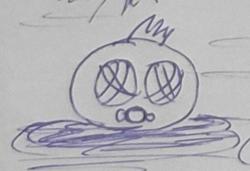Whoops, forgot to get back to you! LPVs aren't *quite* the same thing as point-cloud GI. You're basically chopping up the world into a voxel grid and figuring out how much light is flowing through each voxel; you inject some source light via reflective shadow maps or just plain point emitters (as I understand it, this was experimented with in Crysis, though I guess it was dropped. Apparently Crytek don't know how do do specular with it or something?) and then diffuse everything out across the volume.
In practice, you can get
pretty fantastic results, though there are still a few areas that can stand to be improved over what shipped in Crysis/possibly the video. The big one, like you point out, is the lack of specular highlights-- this isn't so much a shortcoming of the technique inasmuch as Crytek never seem to have put the effort into doing it. While the idea had been around since around the turn of the millennium, you can project BRDFs into the spherical harmonic basis and use that to compute reflectance by convolving it with the sampled LPV result.
Halo 3/Reach actually do something fairly similar, though they actually sample the lightmap at a character's feet-- things are also a little smoothed over since you're using the same lighting data for the whole model.
The other issue is that light can bleed around corners somewhat, since you can't actually linearly blend between SH samples! The Dangerous Curves breakdown by the ATI demo team goes into detail on this, but you actually need to use irradiance gradients for proper blending.
clb: At the end of 2012, the positions of jupiter, saturn, mercury, and deimos are aligned so as to cause a denormalized flush-to-zero bug when computing earth's gravitational force, slinging it to the sun.



